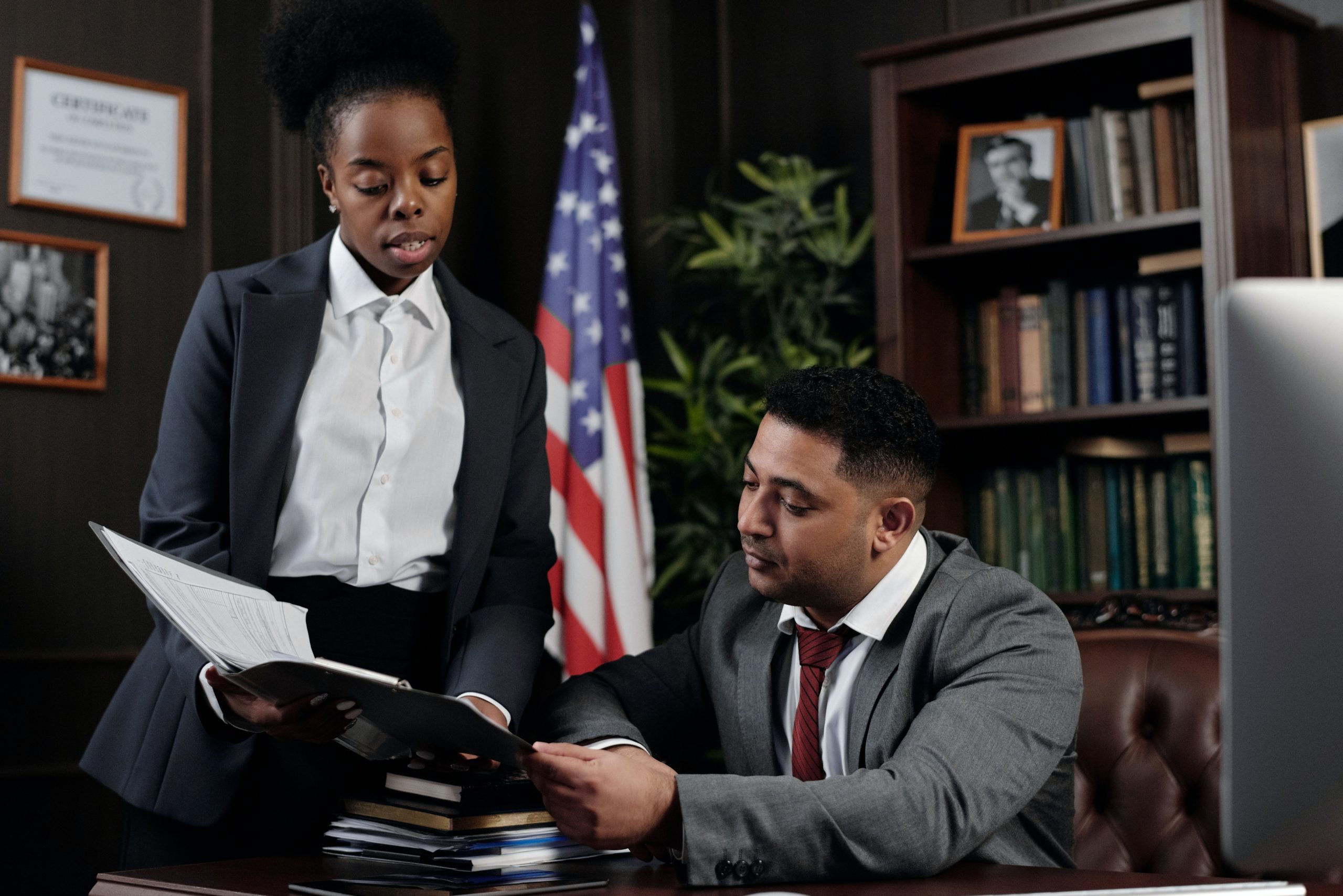A Basic Understanding of the Legal Discovery Process
by Jeff Hauck, JD, CPO, CII, LPI
What is Legal Discovery?
All paralegals, either prior to graduation or prior to seeking employment should start to become familiar with the process of Legal Discovery. It is a fundamental paralegal skill and, although the process is covered much more in-depth in the Blackstone Career Institute Civil Litigation Advanced Paralegal Program, the basic Paralegal/Legal Assistant students must be aware of what it is and how it is used in order to obtain familiarity with it. In short, a paralegal who does not understand the basic discovery process may find it difficult to obtain an employment position.
The basic discovery process includes the primary methods of Disclosure, Interrogatories, Admissions of Facts, Requests for Production, and Depositions. It is important to understand that this is a time-intensive process which remains the only route to gather all of the information you will need to build a case file to take to trial. In your role as the paralegal it would be an understatement to say that you will be deeply involved within this process.
Discovery, by way of definition in the legal context, is the process during which both parties to a lawsuit are entitled to receive certain facts, documents, and other information (evidence) relative to the matter which is formally exchanged between the parties, usually through their counsel. This important legal tool is intended to eliminate the element of evidentiary surprise, clarify legal issues, and to limit the length of the trial so that all discoverable material is produced up front and prior to the commencement of trial. A paralegal must understand that the Discovery process is critical to the outcome of a legal proceeding or trial.
These four primary techniques used in the discovery process are described as follows:
- Interrogatories (etymologically from the word interrogate) are a set of written questions that must be answered under oath asked by a party in a lawsuit of another party or of a potential witness prior to trial.
- Requests for Admissions (also called a request to admit) is a written statement sent from one party to the other in a case. The purpose is for the receiving party to admit or deny the allegations against them.
- Requests for the Production of Documents asks the responding party to make available all of the original documents pertinent to the case, however the propounding (asking) party may request that photocopies be sent instead, if inspection of the original document is not necessary. Document inspection is the right to examine and copy the opposing party’s papers in a lawsuit which are relevant to the case. A demand (legal request) may be made, but the categories of documents must be stated so that the other party can know what he or she must produce. Today, the majority of documents and data are electronic in nature so you will hear reference to what is known as Electronic Discovery (or E-Discovery) where documents are recovered, stored, and shared in electronic format (PDF, DOC, etc.). Parties in litigation label the documents they produced in Discovery so they can easily refer to the documents during proceedings such as depositions. This process is known as Bates-labelling or Bates-stamping.
- Last, under a Deposition the attorneys will ask the witness, or deponent, a series of questions about facts and events related to a lawsuit with the entire deposition recorded word-for-word by a court reporter. This usually occurs in the office of an attorney. The court reporter will produce a transcript at a later time. A deposition can also be videotaped. This is usually done when a deponent is very ill and may not be well enough for trial, or if the deponent will be out of town or otherwise unavailable during the scheduled trial.
How the Process Works
Basic Paralegal Duties in Receiving a Legal Discovery Request
If the paralegal receives a request for Discovery initiated by an opposing counsel or party the incoming requests will be reviewed and the paralegal will take responsibility for calendaring the due date on his or her and the attorney’s calendar. The paralegal will note any of the requests that may be objectionable. The paralegal will then prepare a draft of any objections preparatory to meeting with the attorney assigned to the case. The paralegal will be responsible for drafting a transmittal letter to the client with all necessary instructions along with the legal Discovery requests. The client will then be scheduled for an appointment to meet with the paralegal so as to review the client’s draft answers and responses. In this capacity, the paralegal acts as the conduit for information to pass between the attorney and the client as the paralegal will answer any interim questions the client has concerning Discovery or relay information to the attorney as needed. The paralegal will then draft the answers and responses to the legal Discovery request and will become more knowledgeable about the facts and issues surrounding the case. The paralegal will then prepare the initial draft discovery responses and will determine which documentation is the most responsive to the discovery requests prior to review by the attorney. After ensuring that the answers and responses are as complete, responsive, and thorough as possible, the paralegal will take responsibility for finalizing the outgoing answers and responses to be sent back to the requesting counsel or party.
Basic Paralegal Duties in Initiating a Legal Discovery Request
In initiating a request for Discovery, the paralegal may assist an attorney in a case by drafting the appropriate Discovery requests to be sent to the opposing party. The paralegal will take responsibility for calendaring the due-dates associated with the outgoing discovery request on their own and the attorney’s calendar. If the due date passes and no responses from the opposing party are received the paralegal will make note of this fact and will assist in preparing a follow-up letter to the opposing counsel or the opposing party. When Discovery responses are received from the opposing counsel or party, the paralegal takes responsibility for making an in-depth review of the answers and responses. The paralegal will read through all of the Answers to Interrogatories (questions) and will review all of the documents produced and the accompanying legal Discovery pleading entitled Response to Request for Production of Documents received from the opposing counsel or party. The paralegal will then review, log (Bates label/ date-stamp), and organize the incoming documents. Throughout this process, the paralegal will become knowledgeable about the case by becoming familiar with the parties’ backgrounds and the claims and positions as to certain issues being made by the opposing party. Following a review of legal Discovery answers and responses, the paralegal will make a list and prepare a chart or comprehensive letter addressed to the opposing counsel regarding any discovery deficiencies that are critical to the case. The paralegal may also assist with preparation of a Motion to Compel Discovery in the event that the request for Discovery was not acted upon, or the drafting of a more detailed motion if the received responses are lacking and are not sufficiently addressed by the opposing party or counsel. This motion, under penalty of sanctions, forces the production of the requested evidence and is argued by an attorney before a judge.
The Process of Legal Discovery Exchange
Following the exchange of initial discovery information between parties, the paralegal will compile all of the data and prepare a comprehensive chart of the information and evidence received and as yet needed so as to produce a working document throughout the case. The chart may be updated throughout the course of the legal process and will be utilized by the attorney in formulating a legal strategy which the paralegal will often assist with. This chart (or versions of it) may be used at trial as a reference document if the matter does not settle prior to the court date. The paralegal may also be expected to draft and calendar return dates for a Subpoenas Duces Tecum which, as a court summons, orders a recipient to appear before the court to produce specific documents which are required for the case. That subpoena could be used to produce business or personal papers, bank records, etc. The paralegal would then receive, log, and review any documents received in this manner as well. In addition, the paralegal may help draft deposition questions to be asked of an opposing party based upon a review of the responses received from the Discovery process. Should the matter go to trial, the paralegal will demonstrate his or her value by utilizing the knowledge gained of the case by identifying and keeping a running agenda of tasks needed to be performed and the exhibits to be utilized during that stage to include any additional legal research to be conducted or expert witnesses to be hired.
In sum, these examples are a brief overview of the working paralegal’s role in the legal Discovery process and should provide a basic understanding of what the legal Discovery process is, how it is received and initiated, and the importance it provides to the prosecution or defense of any case.














